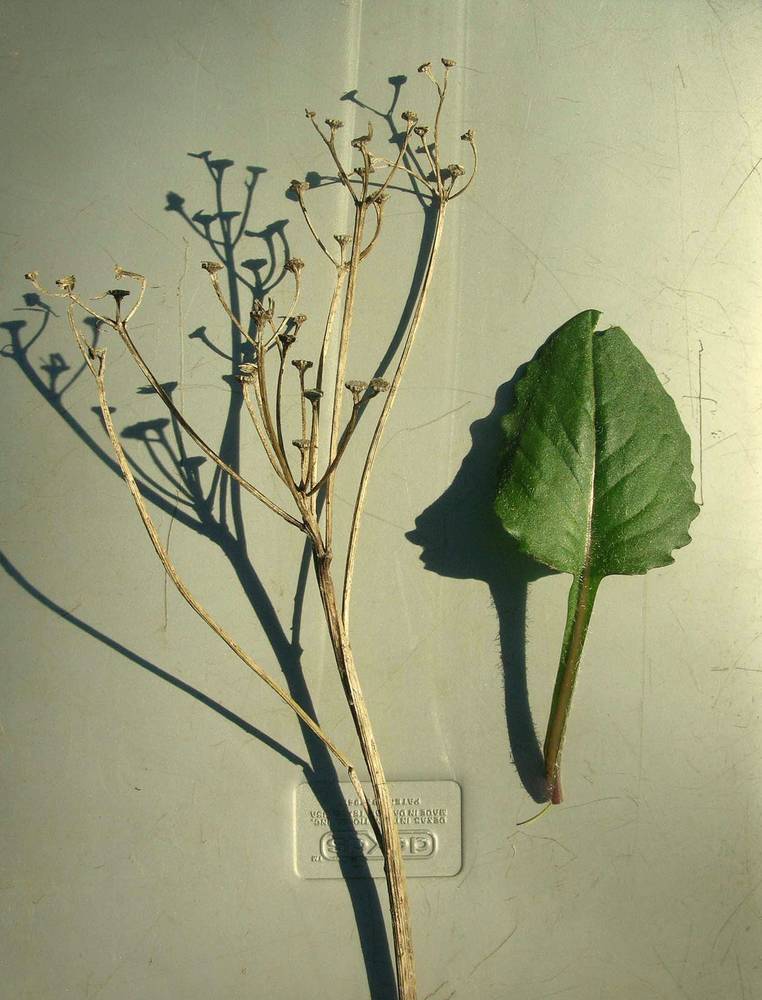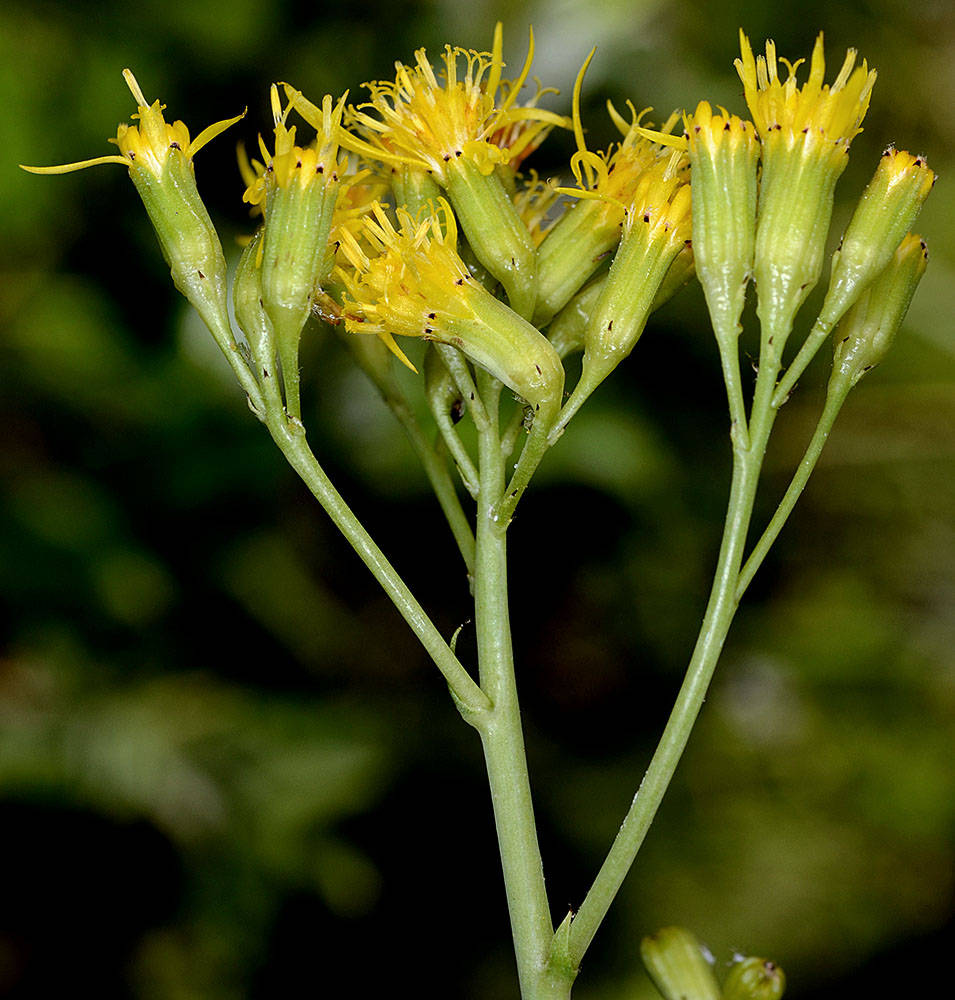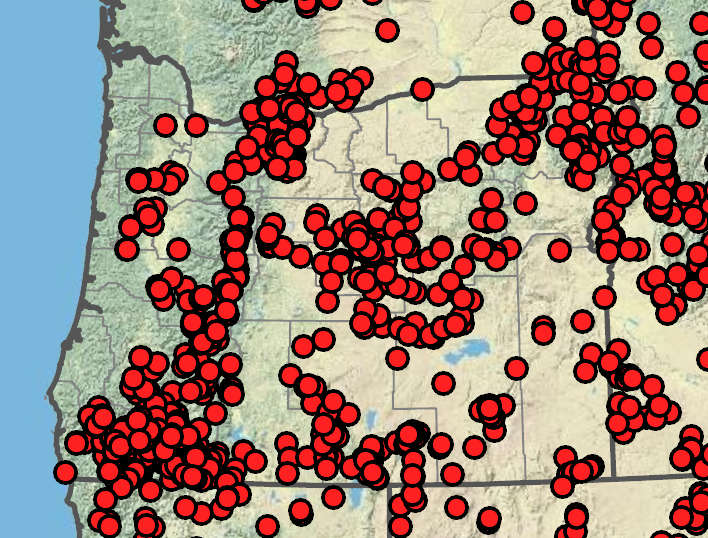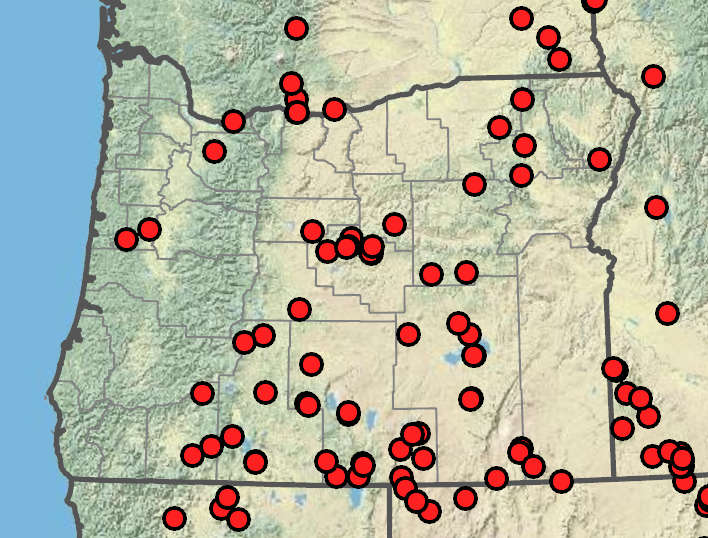Senecio integerrimus
Senecio hydrophilus
lambstongue ragwort, western groundsel
alkali marsh butterweed, water groundsel
1, loosely arachnoid-tomentose, or villous, glabrate with age.
1, or 2–4 and loosely clustered, often bluish green, usually glaucous and glabrous.
mostly basal;
cauline progressively reduced distally; ± petiolate;
basal and lower cauline elliptic, lanceolate, linear, oblanceolate, rounded-deltate, rarely suborbiculate, bases tapered or truncate to cordate;
margins entire or dentate;
distal becoming sessile and bract-like.
progressively reduced distally; thick; fleshy-turgid;
basal and lower cauline elliptic to oblanceolate, bases tapered;
margins entire to denticulate; ± petiolate; middle and upper cauline bract-like;
surfaces glaucous, sessile.
corymb-like arrays;
bracts 0 or inconspicuous.
compound corymb-like arrays;
bracts 0.
urn-shaped.
cylindric or narrowly urn-shaped.
5, rarely 0;
rays 6–15(20) mm, yellow or white to pale yellow.
5, sometimes 0;
rays 3–5 mm.
35–45.
20–35.
(8)13 or 21;
tips usually black, sometimes green.
8 or 13, 5–8 mm;
tips usually black.
1–5+, inconspicuous, usually < 2 mm.
2–4+ bractlets, inconspicuous, usually < 2 mm.
2.5–3 mm, usually glabrous, sometimes hairy along ribs.
2.5–3 mm, glabrous.
6–15(30+).
20–40(80).
=40, 80.
=40.
Senecio integerrimus
Senecio hydrophilus
Western North America. 5 varieties; 3 varieties treated in Flora.
Standing water in marshes, swampy places, alkaline sites. Flowering Jun–Aug. 0–2100 m. BR, BW, Casc, CR, ECas, Lava, WV. CA, ID, NV, WA; north to British Columbia, northeast to MT, east to SD, southeast to CO. Native.
Senecio hydrophilus and S. hydrophiloides can be very difficult to distinguish on herbarium specimens. There are, however, significant ecological differences, with the former species restricted to alkaline soils and the latter found in damp but not alkaline places.
Debra Trock
Debra Trock
- Local floras:
BC,
CA,
OR,
WA
- Local Web sites:
CalFlora,
CalPhotos,
Flora NW,
PNW Herbaria,
Turner Photog.
WildflowerSearch
iNaturalist (observations)
USDA Plants Database
- LBJ Wildflower Center
- SEINet
- Plants of the World Online
- Encyclopedia of Life
- Wikipedia
- Google Image Search
- Local floras:
BC,
CA,
OR,
WA
- Local Web sites:
CalFlora,
CalPhotos,
Flora NW,
PNW Herbaria,
Turner Photog.
WildflowerSearch
iNaturalist (observations)
USDA Plants Database
- LBJ Wildflower Center
- SEINet
- Plants of the World Online
- Encyclopedia of Life
- Wikipedia
- Google Image Search





